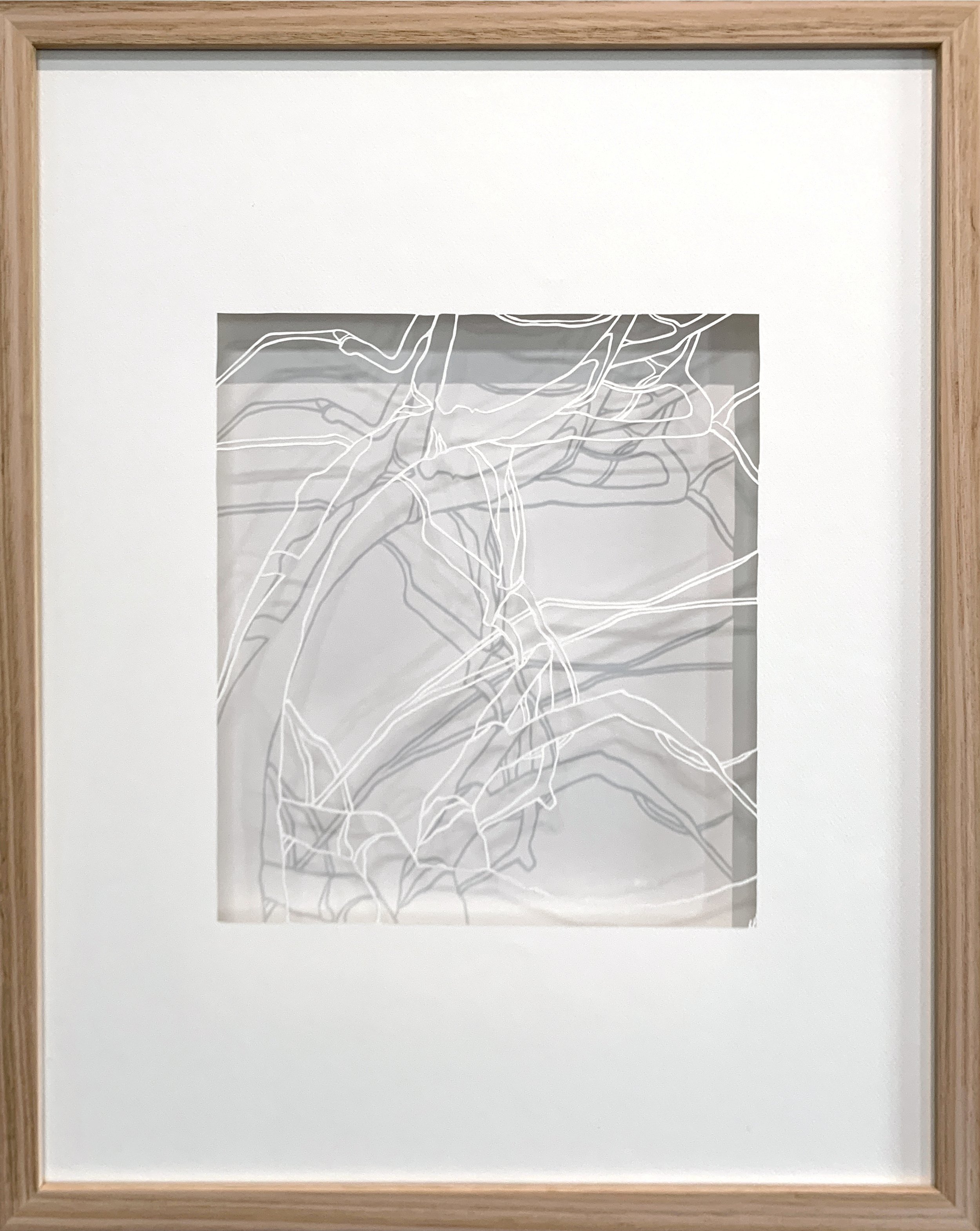Ghost Gums
LEDA Gallery
18 - 31 August 2022
Beside the crumbly buildings with tin roofs, chicken wire fences and hand-painted signs, stand ancient trees. Smooth white branches twist like sinew as knobbly joints rise above the faded bitumen. Everywhere I go I see Ghost Gums.
Everywhere I go I see ghosts.
Here is a site on Awabakal Country where a fast food restaurant rests on campsite remains[1]. Here is a site on the land of the Bidjigal and Gadigal peoples of the Eora nation where a tram depot runs over an ancient quarry[2]. Here is a site on the land of the Mumirimina people where a 70 metre bridge spans a previously undisturbed connection to culture[3]. Here is a site on Wiradjuri Country where a once military garrison, once convict station, once police barracks, now bowling club green, stands over a believed colonial gravesite[4].
Presented side by side, ancient bodies and contemporary landscapes, the final pieces are as much about the carved paper, as the emptiness behind the image.
_
1. Over 5000 stone tools and campsite remains were found, dating back to between 6716 and 6502. The final excavation report stated the site contained “high to exceptional cultural and scientific significance”
2. Over 2400 stone artefacts and five glass artefacts were excavated, demonstrating the area had been used as a quarry between 1788 and 1830. Whilst artefacts were extracted from 1% of the site, it was “critical that construction preparation continued” over the rest of the site.
3. Studies found that on average 100 stone tools were uncovered per square metre of excavated deposit. Some tools date back at least 37,000 years.
4. Government domain was established in 1815 and the site became headquarters for the military. Barracks and a gaol were built in 1822 and the land was released for public use in 1847, after the Bathurst War of 1824.














